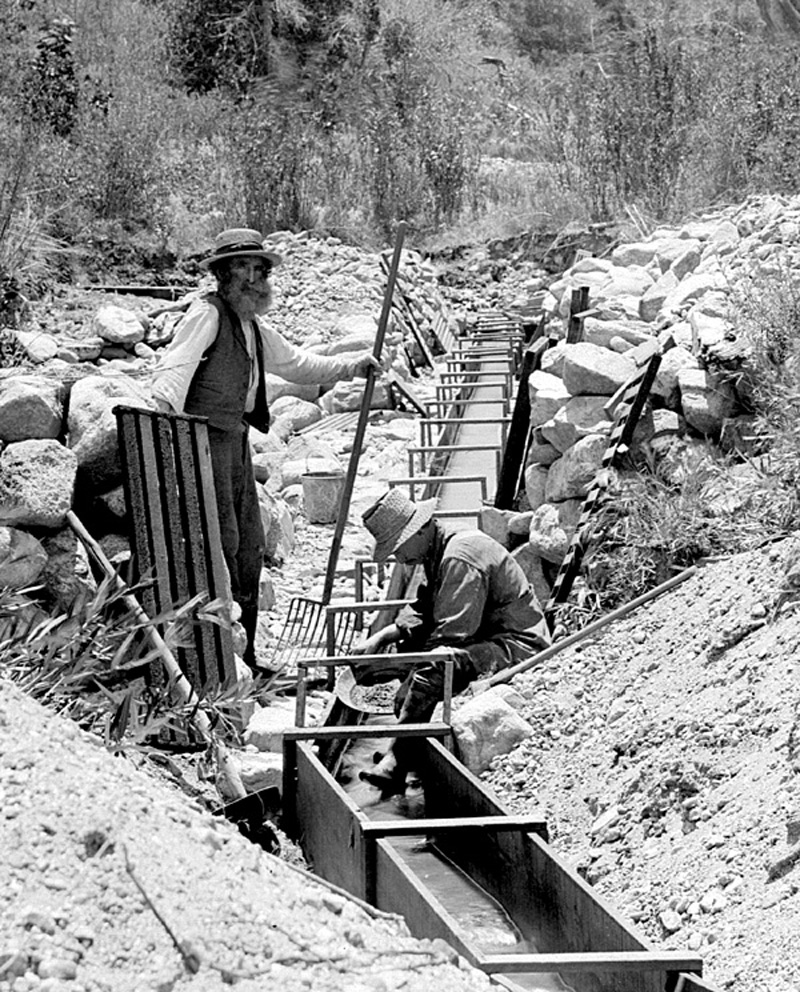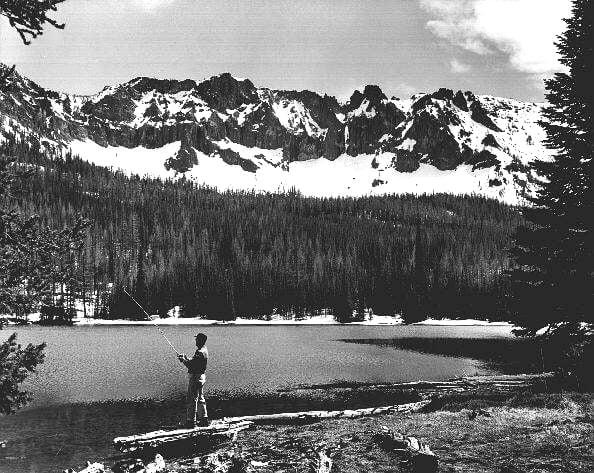History of Grant County
Special Edition
Enjoy our special edition on Grant County’s history.
Grant County was established on October 14, 1864, from parts of old Wasco and old Umatilla counties. Prior to its creation, cases brought to court were tried in The Dalles, county seat of the vast Wasco County.
The great distance to The Dalles made law enforcement a difficult problem, and imposed a heavy burden on citizens who had a need to transact business at the courthouse. In 1889, more than half of the southern part of the original Grant County was taken to form Harney County. Also in 1899, a small part of northwestern Grant County was taken (along with parts of Crook and Gilliam counties) to form Wheeler County.


After gold was discovered in 1862 on Whiskey Flat, it has been estimated that within ten days 1,000 miners were camped along Canyon Creek. This increased population created a need for county government.
Grant County’s government operates in accordance with the Oregon Constitution which was ratified by the People of Oregon in November 1857, and the revised Statutes of Oregon. It employs the old-western county government system: the County Court, with a County Judge and two Commissioners. While the County Court no longer exercises much judicial authority, it serves as the executive branch of county government. There are no parishes or villages in Grant County, and while the term ‘town’ is often used locally to describe one of the incorporated cities, surveyed townships have nothing to do with political divisions or organization in Oregon.
The third man to serve as County Judge of Grant County was Cincinnatus Hiner ‘Joaquin’ Miller (1837-1913), the noted poet, playwright, and western naturalist, called the ‘Poet of the Sierras’ and the ‘Byron of the Rockies’.
The county seat is Canyon City, which served as the chief community of the county for many years. In 1864, when the county was organized, Canyon City is said to have boasted the largest population of any community in Oregon. Mining and ranching, along with timber and then the service and public works that followed, brought people into the area and communities grew around the natural centers of industry and agriculture. Since the 1930s, the city of John Day has served as the main economic center of the county, and boasts the largest population.
Striking it rich – in Canyon City history
“One hundred and fifty years ago, on June 8, 1862, gold was discovered in Canyon Creek. Within a short time, the creek and surrounding hills were thick with those in search of the precious yellow metal. Soon the area was known for being the richest placer in the Northwest, with a total of over $26 million worth of gold recovered.
Canyon City teemed with people that, in time, numbered over 10,000. It was the gold discovery in Eastern Oregon that set the stage for other strikes and towns. The large area of Eastern Oregon would be settled by farmers, ranchers, loggers, teamsters, shop keepers, railroad builders and many others, who derived their incomes because of the gold rush.
In 1922, the Canyon City fathers and others in Grant County decided to commemorate those days some 60 years past with a celebration they called 62 Days. Now, 90 years later, this event is still held on a yearly basis in Canyon City.
This years theme is Gold Fever in 1862. Plans for the parade, barbecue, breakfast, street activities, melodrama and other activities are discusses at the weekly Friday meetings held at 7 p.m. in the historic F.C. Sels Brewery in Canyon City. The public, vendors and those who wish to participate in the celebration are cordially invited to attend. Your input and help will be appreciated.
Dave Traylor is the president of The Whiskey Gulch Gang.” – Blue Mountain Eagle


The water
Most of Grant County is drained by the four forks of the John Day River, all of which have their headwaters in the county. The John Day River system drains some 7,900 square miles.
It is the third longest free-flowing river in the lower 48 states and has more miles of federal ‘Wild and Scenic River’ designation than any other river in the United States.
The river system in Grant County includes the upper 100 miles of the Main Stem, all of the 112 miles of the North Fork, all 75 miles of the Middle Fork, and all 60 miles of the South Fork of the John Day River. From Grant County, the lower John Day River flows another 184 miles to its confluence with the Columbia River. The southeastern corner of the county includes the headwaters of the Malheur and Little Malheur rivers, which find their way to the Snake River. The southern part of Grant County includes the northern-most reaches of the Great Basin, including the Silvies River watershed, which flows south into Harney Lake in the High Desert of Eastern Oregon. A small area in the southwestern corner of Grant County is in the Crooked River and Des Chutes River watersheds
The Climate
Grant County enjoys a great deal of sunshine, with an estimated 200 days of clear sunny or mostly sunny days, or an estimated 300 days of clear sunny, mostly sunny, or partly sunny days each year. The county experiences an estimated 65 days of overcast skies, with about 165 days of partly to mostly cloudy days annually.
Average temperatures in the county range from the warmest community, Monument, with average daily highs/lows of 90/50 degrees F in July and 42/22 degrees F in January, to the coolest community, Seneca, with average daily highs/lows of 80/38 degrees F in July and 33/8 degrees F in January. Extreme temperatures in the county show 30-year highs/lows of: 103/-37 F at Austin; 112/-23 F at John Day; 108/-25 F at Long Creek; 112/-26 F at Monument; and 100/-48 F at Seneca.



 by Lodgingwise
by Lodgingwise